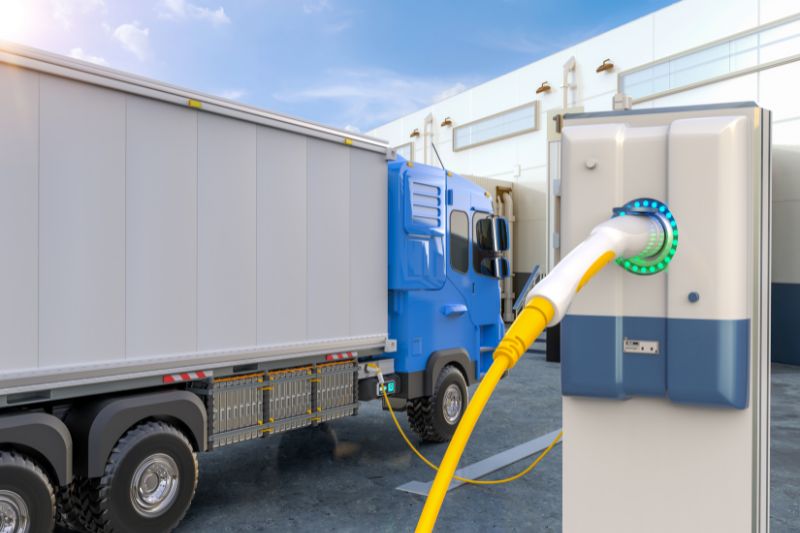Transportation is one aspect we cannot do without in this day and age. However, the current transportation systems come along with a wide range of problems including global warming, environmental degradation, health implications (physical, emotional, mental, spiritual), and emission of greenhouse gases.
In fact, the transport sector accounts for 29% of the United States’s greenhouse gas emissions, all resulting from the burning of fossil fuels.
Out of the total greenhouse gas emissions, road transport takes up a lion’s share, 75% to be precise, and the percentage is projected to surge in the future if it continues unabated.
All this puts a lot of pressure on the national governments to devise policies to reduce greenhouse gas emissions as well as oil demands.
Statistics show that over 90% of all road transportation is petroleum-based. This figure almost goes hand-in-hand with the total global oil consumption, which stands at 60%. All these scenarios have caught the eyes of most governments and policies are being formulated to reverse this worrying trend of air pollution.
In this campaign, transportation is the sector being targeted most, since as the main consumer of crude oil products, it is the major contributor to greenhouse gas emissions.
The immediate and obvious solution to this wanton environmental pollution is the greening of the transport sector.
And just in case you’re wondering what exactly greening in this case is, it encompasses any sort of transportation vehicle or transportation habit that is environmentally friendly and doesn’t emit toxic gasses that could impact the environment and human health.
This leads to Green Transportation, which means any kind of transportation practice or vehicle that is eco-friendly and does not have any negative impact on the immediate environment.
Green transportation revolves around efficient and effective use of resources, modification of the transport structure, and making healthier travel choices.
For this to bear any fruit, it requires dedicated public awareness and participation, management of privately owned vehicles, and innovation and production of vehicles that utilize renewable sources of energy such as wind, solar, biofuels and hydroelectricity.
Modes of Green Transportation
We’ve learned that the existing modes of transportation require enormous amounts of energy, for example, fossil fuels (natural gas, coal, oil) to power vehicles on the roads. Many recognize that these very automobiles cause a lot of pollution, which impacts the environment and leads to health complications.
Promising innovative technologies could be the ultimate solution, but before such innovations come to fruition, the world can play a significant role by utilizing eco-friendly modes of transportation.
Though it is much more comfortable and convenient to drive one’s own private vehicle to the office or market every other day, as a responsible citizen, one should opt for green transportation that is easily accessible to everyone.
Let’s look at some of the modes of green transportation available in this age.
1. Bicycle

This is a no-brainer. Using bicycles to commute is a great mode of green transportation. Riding a bicycle instead of driving a car enormously minimizes the emission of greenhouse gases from driving.
Although walking is a great green transportation mode, a bicycle has far-reaching benefits because it’s faster, plus it’s in itself a form of workout. In fact, cycling for just an hour helps you burn 300 to 1000 calories depending on the intensity of the activity.
Plus, you can buy a bicycle at really reasonable prices these days. Buying and maintenance cost is only a fraction of what’s required for a car.
2. Electric Bike

In case you prefer a more modern or faster mode of transport than the traditional bikes, then you can consider working with an electric bike.
Electric bikes are great modes of green transportation because they don’t release any harmful emissions into the environment. With an electric bike, only light peddling is needed. The speed of electric bikes is greatly regulated by law, though.
Some countries limit electric bike speeds to 20 mph. Still, in other countries, you must have a special registration, license, and insurance to be able to ride an electric bike.
3. Electric Vehicles

Some notable kinds of electric vehicles include cars, motorcycles, Lorries, trains, boats, and scooters. Electric vehicles powered entirely by electricity do not emit any dangerous gasses, even though the toxic emissions might be produced by plants generating electricity. Still, the power can be tapped from renewable technologies like geothermal, hydroelectric, solar power, and wind turbines.
Opting for green vehicles powered by alternative fuels and advanced vehicle technologies puts less pressure on the environment as compared to conventional internal combustion engine vehicles running on petrol or diesel.
4. Green Trains

With most world governments now dedicated to supporting green transportation more than ever, trains are getting increasingly greener with hybrid locomotives and other innovative green technologies. The innovative hybrid locomotives utilize similar technologies applied in hybrid cars.
Modern electric trains make use of electrified third rail, overhead lines, or devices that store energy like fuel cells and batteries. The advantage of these electric trains is that they travel at top speeds of more than 200 mph while still maintaining high levels of safety for travelers and the environment.
5. Electric Motorcycles

Like other electric vehicles, electric motorcycles do not give off emissions. They are typically battery-powered. Nonetheless, pollution may occur as a result of the generation of grid electricity utilized to charge electric bike batteries. Electric motorcycles, however, come with a huge price tag.
The cheapest electric motorcycle could cost you about $5,000 to $10,000, with top models going for a price that’s much higher than this range. Some top-range motorcycles even have their parts designed from recycled materials.
Some prototypes leverage fuel technology and experts are projecting that they may be mass-produced in the near future.
6. Multiple Occupant Vehicles

The explosion of vehicles around the world has been due to the booming world economy. While this is a milestone many are happy about, pollution levels have significantly increased.
Multiple occupant vehicles, also referred to as carpools, reduce the number of vehicles on roads, hence, minimizing levels of pollution. Multiple occupant vehicles are very eco-friendly and favorable modes of green transportation.
Groups of friends and colleagues can make use of one vehicle when habitually driving in a similar direction. Instead of 5 individuals driving their own cars in a similar direction, it’s a lot more economical (saves money and fuel) and ecologically sensible to make use of a single car to take all of you to the destination. Definitely a great way to save petrol and money!
7. Service and Freight Vehicles

These kinds of vehicles contribute to about 9% of the total toxic gas emissions. Utilizing electricity and biofuels instead of the regular fossil fuel sources in services and freight vehicles, administering travel demands, and offering lots of travel alternatives will go a long way towards aligning the transportation sector to conform to green transportation.
8. Hybrid Cars

Hybrid cars also rely on electricity. A vast majority of hybrid cars are designed to automatically recharge their batteries by converting the energy in the course of braking. Greenhouse emissions in hybrid cars are extremely low; emissions can range from 26% – 90% lower compared to standard cars.
According to experts, hybrid cars cut down health-threatening emissions by over 90%. While hybrid cars contribute little to no greenhouse emissions, they lack in some areas. The batteries have some environmental impacts. This means the caustic substances lighting up the batteries have to be carefully and well disposed of.
9. The New Hybrid Buses (Public Transportation)

Some of the best innovative green buses have already hit the market. A classic example is the Mercedes-Benz Ciatro G BlueTec Hybrid Bus, which utilizes 4 electrical wheel hub motors together with automotive lithium-ion batteries.
The lithium-ion battery is regarded as the world’s largest. The battery has the capacity to store vast amounts of energy derived from a diesel generator. The bus also generates energy in the course breaking.
10. Pedestrians

One should prefer to walk to school, work, grocery shopping, etc. if at all they aren’t too far. Walking involves zero emission of any greenhouse gas, it’s free and an additional plus is that it’s a good form of exercise for the body.
Benefits of Green Transportation
Green transportation has wide-ranging benefits — environmental, health, economic, and individual budgets. Enlisted below are some of the key benefits of using green transportation:
1. Fewer to No Environmental Pollution
The existing modes of transportation utilize sources of energy such as fossil fuels, which emit vast quantities of greenhouse gases to the environment. Shifting to green transportation would help rid the atmosphere of these toxic gases since these modes of transportation have few to zero emissions.
2. Saves You Money
Embracing green transportation modes like bicycles, multiple-occupant cars, and electric motorcycles will save you a lot of out-of-pocket costs related to buying fossils fuels at the pump.
3. Contribute to The Building of A Sustainable Economy
Manufacturing and distribution of green vehicles will go along with improving existing transport systems. This will lead to the creation of more jobs in the transport sector, hence, minimizing social-economic disparities and building up a sustainable economy. It will also minimize over-reliance on fossil fuels, which drain the economy.
4. Improved Health

Fossil energy sources like natural gas, coal, and oil emit toxic gases that negatively affect our health. In fact, these gasses have been associated with rising cases of cancer and other cardiovascular diseases.
But that’s not the case with green transportation. Emissions produced by green vehicles are not harmful to human health, so embracing green transportation will only improve a country’s health status.
There are many other benefits associated with green transportation which will enhance a healthier lifestyle and improve the quality of human life. It’s a daunting task to convince the entire population to change to green transportation, but with significant steps underway, the future of green transportation is nothing but bright.
Apart from this, there are various ways to go green at home. This will not only reduce the consumption of energy but will also save our environment from further degradation.






